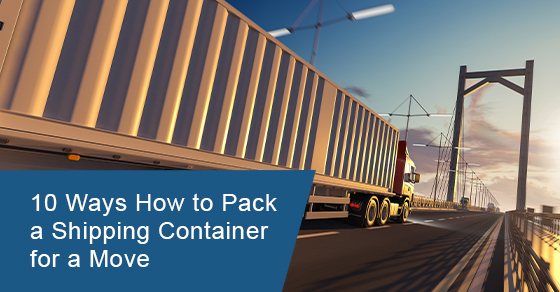
How Much to Move a Shipping Container? Your Guide to Costs, Factors, and Quotes
The humble shipping container: a ubiquitous symbol of global trade, a robust shelter for storage, and increasingly, a versatile building block for innovative architectural designs. But what happens when you need to relocate one? Whether you’re a business owner looking to move inventory, a homeowner repurposing a container for extra space, or an entrepreneur embarking on a container home project, the question remains: how much to move a shipping container?
This comprehensive guide dives deep into the factors that influence the cost of moving a shipping container. We’ll explore the various expenses involved, from transportation and permits to insurance and labor. We’ll also equip you with the knowledge to obtain accurate quotes and make informed decisions, ensuring a smooth and cost-effective relocation process. Understanding the intricacies of shipping container movement is crucial to budgeting effectively and avoiding unexpected expenses.
Understanding the Core Costs
The primary cost associated with moving a shipping container is transportation. This includes the actual movement of the container from its origin to its destination. Several variables impact this cost, including the distance, the chosen mode of transport, and the size and weight of the container. Let’s break down the key components:
- Distance: This is arguably the most significant factor. The further the container needs to travel, the higher the transportation costs. Costs are often calculated per mile or kilometer.
- Mode of Transport: You have several options, each with its own price point:
- Trucking: This is the most common method for short to medium distances. Costs are influenced by fuel prices, driver availability, and the type of truck required (e.g., flatbed, specialized container chassis).
- Rail: Rail transport is often more cost-effective for long distances, especially across states or countries. However, it requires access to rail lines and can involve additional costs for drayage (trucking to and from the rail depot).
- Ocean Freight: If your shipping container needs to cross international waters, ocean freight is essential. This involves costs for the ship, port fees, and customs clearance.
- Container Size and Weight: Standard shipping containers come in two main sizes: 20-foot and 40-foot. Heavier containers will require more robust equipment and may incur higher transportation fees. Overweight containers may also be subject to additional charges and legal restrictions.
Additional Expenses to Consider
Beyond the core transportation costs, several additional expenses can contribute to the overall price of moving a shipping container. These include:
- Permits and Regulations: Depending on your location and the route, you may need to obtain permits for oversized loads or for transporting the container on specific roads. These permits can involve fees and specific requirements.
- Loading and Unloading: Unless you have the equipment and expertise, you’ll likely need to hire professionals to load and unload the container onto and off the transport vehicle. This includes the use of cranes, forklifts, or other heavy machinery.
- Insurance: Protecting your shipping container and its contents during transit is crucial. Insurance premiums will vary depending on the value of the container and the level of coverage required. Consider both cargo insurance and liability insurance.
- Storage: If you need to store your shipping container at a depot or facility before or after transport, you’ll incur storage fees.
- Customs and Duties (International Moves): If you’re moving your shipping container internationally, you’ll need to factor in customs clearance costs, duties, and taxes. These vary depending on the country of origin and destination.
- Labor Costs: The labor associated with the move can include the driver, the crane operator, and any additional personnel needed for loading, unloading, and securing the container.
Getting Accurate Quotes: A Step-by-Step Guide
Obtaining accurate quotes is essential for budgeting and comparing different transportation options. Here’s a step-by-step guide to help you:
- Determine Your Needs: Clearly define the origin and destination of your shipping container. Specify the container’s size, weight, and any special requirements (e.g., hazardous materials, fragile contents).
- Research Potential Movers: Look for reputable shipping companies or specialized container moving services. Read reviews, check their credentials, and ensure they have experience moving containers of your size and type.
- Request Multiple Quotes: Contact several different companies and request detailed quotes. Be prepared to provide all the necessary information about your move.
- Compare Quotes Carefully: Don’t just focus on the bottom line. Compare the scope of services included in each quote. Does it include loading and unloading? Insurance? Permits?
- Ask Questions: Don’t hesitate to ask the companies any questions you have about the quotes, the transportation process, or their experience.
- Verify Credentials: Before making a decision, verify the company’s licenses, insurance, and any other relevant credentials.
Factors that Influence Shipping Container Moving Costs
Several factors influence the final cost of moving a shipping container. Understanding these factors can help you anticipate costs and make informed decisions. Here’s a deeper dive:
- Seasonality: Demand for transportation services can fluctuate throughout the year. Peak seasons, such as the holiday season, can lead to higher prices.
- Fuel Costs: Fuel prices directly impact trucking costs. Fluctuations in fuel prices can significantly affect the overall cost of moving a shipping container.
- Accessibility: The accessibility of the origin and destination locations can affect costs. Difficult-to-access locations may require specialized equipment or incur additional labor charges.
- Container Condition: The condition of the container can influence costs. If the container requires repairs or modifications before transport, it will add to the overall expense.
- Type of Goods: The contents of the container can affect the cost. Hazardous materials or perishable goods may require specialized handling and transportation, increasing the cost.
- Time Sensitivity: Rush orders or expedited shipping will typically cost more than standard shipping.
How to Reduce the Cost of Moving a Shipping Container
While moving a shipping container can be a significant expense, there are several strategies you can employ to potentially reduce costs:
- Plan Ahead: The earlier you plan your move, the more options you’ll have for securing competitive quotes and avoiding rush fees.
- Be Flexible with Dates: If possible, be flexible with your moving dates. This can allow you to take advantage of off-peak pricing.
- Compare Quotes Thoroughly: Get multiple quotes from different companies and compare the services offered.
- Consider Alternative Transportation Methods: For long distances, explore the possibility of using rail transport.
- Prepare the Container: Make sure the container is ready for transport. This includes ensuring it’s properly secured, that there are no loose items, and that it meets any necessary safety requirements.
- Handle Loading and Unloading Yourself (If Possible): If you have the equipment and expertise, consider handling the loading and unloading of the container yourself to save on labor costs.
Examples of Shipping Container Moving Costs
While providing exact figures is difficult due to the variables involved, here are some general examples to give you a sense of the potential costs involved in moving a shipping container. Please note that these are estimates and should not be considered definitive. Always obtain a personalized quote based on your specific needs.
Local Move (within 50 miles): You can expect to pay anywhere from $200 to $1,000, depending on the distance, the size of the container, and the services included. This usually covers trucking, loading, and unloading.
Regional Move (100-500 miles): Costs can range from $500 to $2,500 or more, depending on the distance, the mode of transport, and any special requirements. This may include trucking or a combination of trucking and rail.
Long-Distance Move (500+ miles): Moving a shipping container across the country can cost anywhere from $2,000 to $10,000 or more. This typically involves a combination of trucking and rail transport. International moves will be significantly more expensive.
International Move: Costs vary greatly depending on the origin, destination, and the size of the shipping container. You’ll need to factor in ocean freight charges, customs fees, and port charges. These moves can cost thousands of dollars and can be complex.
The Future of Shipping Container Relocation
As the demand for shipping container homes, storage solutions, and commercial spaces continues to grow, the market for relocation services is also evolving. Technological advancements, such as real-time tracking and automated logistics, are streamlining the process and potentially reducing costs. The rise of sustainable building practices is also driving innovation in container modification and transportation methods. The future of shipping container relocation is poised for efficiency and environmental responsibility.
Conclusion
Determining how much to move a shipping container involves careful consideration of numerous factors. By understanding the core costs, additional expenses, and various influencing elements, you can make informed decisions and obtain accurate quotes. Planning ahead, researching thoroughly, and comparing options are crucial steps in ensuring a smooth and cost-effective relocation process. Whether you’re a homeowner, a business owner, or an entrepreneur, the knowledge gained from this guide will empower you to navigate the complexities of shipping container relocation with confidence.
Moving a shipping container requires planning and careful consideration, but with a clear understanding of the costs and factors involved, you can make the process manageable and budget-friendly. By obtaining multiple quotes, comparing services, and being prepared, you can find the best solution for your needs. The cost of moving a shipping container is an investment in your project, and with careful planning, you can ensure a successful outcome.
[See also: Related Article Titles]

